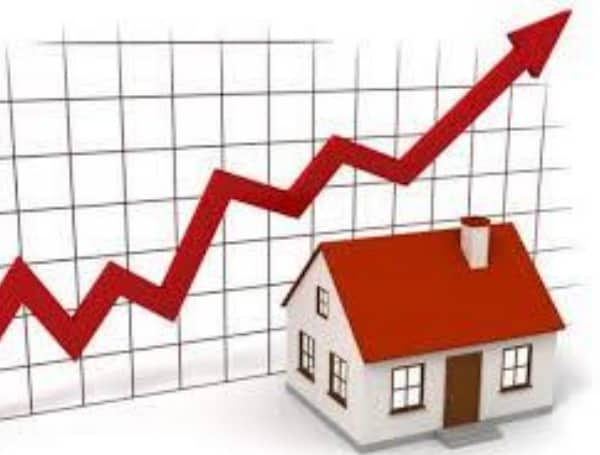Existing-home sales rose in January, marking two consecutive months of growth, according to the National Association of RealtorsÒ. From a month-over-month perspective, buying activity varied in the major regions. Year-over-year, all four areas recorded double-digit gains in January.
Total existing-home sales completed transactions that include single-family homes, townhomes, condominiums, and co-ops, increased 0.6% from December to a seasonally-adjusted annual rate of 6.69 million in January. Sales in total climbed year-over-year, up 23.7% from a year ago (5.41 million in January 2020).
“Home sales continue to ascend in the first month of the year, as buyers quickly snatched up virtually every new listing coming on the market,” said Lawrence Yun, NAR’s chief economist. “Sales easily could have been even 20% higher if there had been more inventory and more choices.”
The median existing-home price for all housing types in January was $303,900, up 14.1% from January 2020 ($266,300), as prices increased in every region. January’s national price jump marks 107 straight months of year-over-year gains.
Whereas much of the economy has suffered due to COVID-19, the housing sector has been one of the few bright spots, according to Yun. In NAR’s latest quarterly report, released last week, home prices in every tracked U.S. metro area increased during the fourth quarter of 2020.
“Home sales are continuing to play a part in propping up the economy,” Yun said. “With additional stimulus likely to pass and several vaccines now available, the housing outlook looks solid for this year.”
Yun says he expects more jobs to return, which will spur homebuying in the coming months. He predicts existing-home sales will reach at least 6.5 million in 2021, even as he says mortgage rates are likely to inch higher due to the rising budget deficit and higher inflation.
Total housing inventory at the end of January amounted to 1.04 million units, down 1.9% from December and down 25.7% from one year ago (1.40 million). Unsold inventory sits at a 1.9-month supply at the current sales pace, equal to December’s supply and down from the 3.1-month amount recorded in January 2020. NAR first began tracking the single-family home supply in 1982.
Properties typically remained on the market for 21 days in January, seasonally even with December and down from 43 days in January 2020. Seventy-one percent of the homes sold in January 2021 were on the market for less than a month.
First-time buyers were responsible for 33% of sales in January, up from 31% in December 2020 and from 32% in January 2020. NAR’s 2020 Profile of Home Buyers and Sellers – released in late 2020 – revealed that the annual share of first-time buyers was 31%.
Individual investors or second-home buyers, who account for many cash sales, purchased 15% of homes in January, up modestly from 14% in December 2020, but down from 17% in January 2020. All-cash sales accounted for 19% of transactions in January, unchanged from December but down from 21% in January 2020.
Distressed sales – foreclosures and short sales – represented less than 1% of sales in January, equal to December’s percentage but down from 2% in January 2020.
“This year, more than ever, we are prepared and eager to help families and neighbors secure housing,” said NAR President Charlie Oppler, a Realtor® from Franklin Lakes, N.J., and the CEO of Prominent Properties Sotheby’s International Realty. “NAR is working to close the racial homeownership gap, secure equal access to housing for all Americans and address housing affordability issues plaguing communities across the country.”
Oppler, citing NAR’s recent Snapshot of Race and Home Buying in America, which reported wide differences in homeownership rates across racial groups, said more work is needed.
According to Freddie Mac, the average commitment rate for a 30-year, conventional, fixed-rate mortgage was 2.74% in January, up from 2.68% in December. The average commitment rate across all of 2020 was 3.11%.
Single-family and Condo/Co-op Sales
Single-family home sales rose at a seasonally-adjusted annual rate of 5.93 million in January, up 0.2% from 5.92 million in December, and up 23.0% from one year ago. The median existing single-family home price was $308,300 in January, up 14.8% from January 2020.
Existing condominium and co-op sales were recorded at a seasonally-adjusted annual rate of 760,000 units in January, up 4.1% from December and up 28.8% from one year ago. The median existing condo price was $269,600 in January, an increase of 8.6% from a year ago.
Regional Breakdown
Compared to one year prior, median home prices rose at double-digit rates in each of the four major regions.
January 2021 witnessed existing-home sales in the Northeast fall 2.2%, recording an annual rate of 870,000, a 24.3% increase from a year ago. The median price in the Northeast was $361,400, up 15.8% from January 2020.
Existing-home sales in the Midwest inched up 1.9% to an annual rate of 1,570,000 in January, a 22.7% jump from a year ago. The median price in the Midwest was $227,800, a 14.7% increase from January 2020.
Existing-home sales in the South grew 3.2%, posting an annual rate of 2,940,000 in January, up 25.1% from the same time one year ago. The median price in the South was $263,300, a 14.6% climb from a year ago.
Existing-home sales in the West fell 4.4% from the month prior, recording an annual rate of 1,310,000 in January, a 21.3% increase from a year ago. The median price in the West was $461,800, up 16.1% from January 2020.

